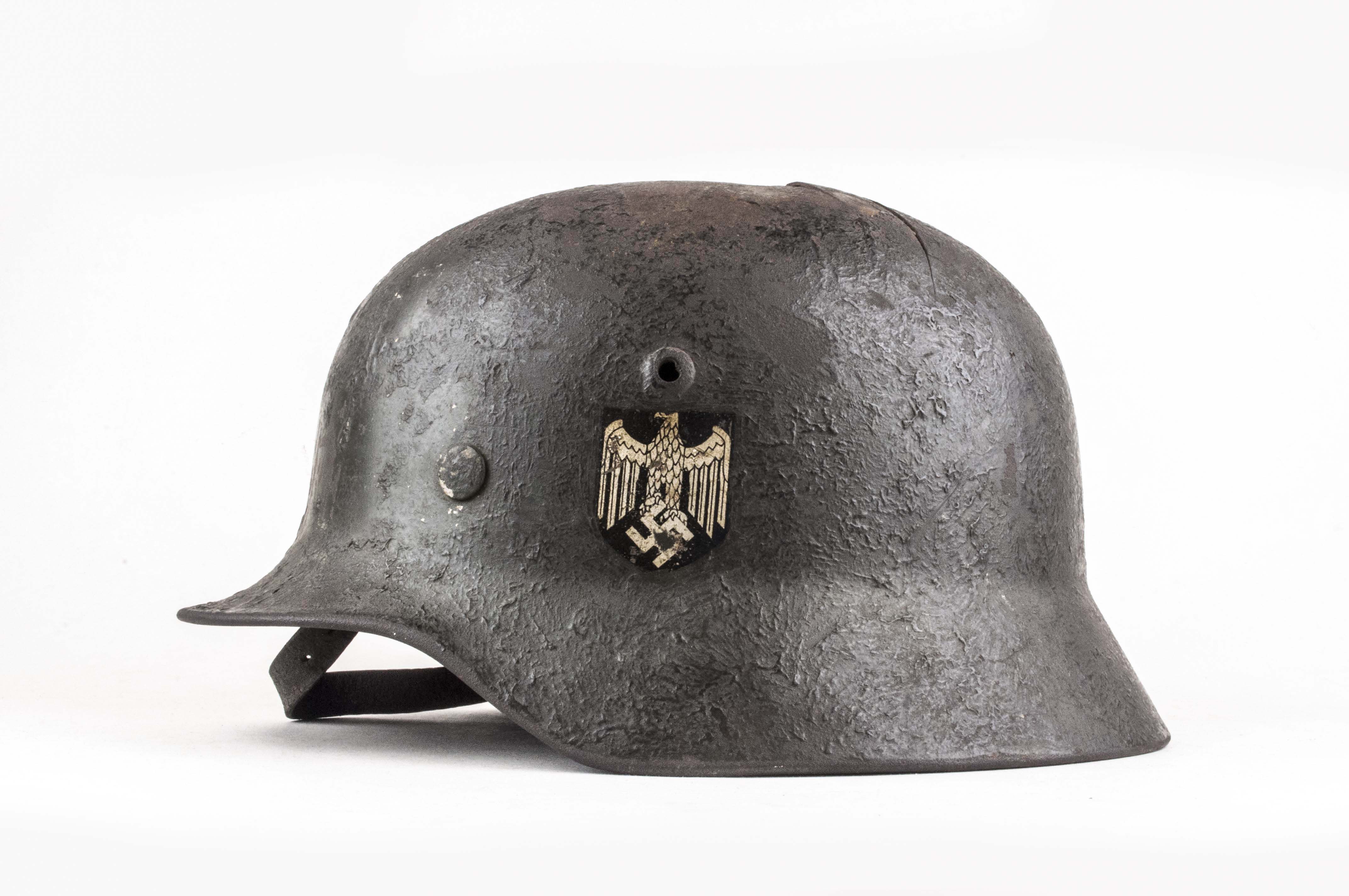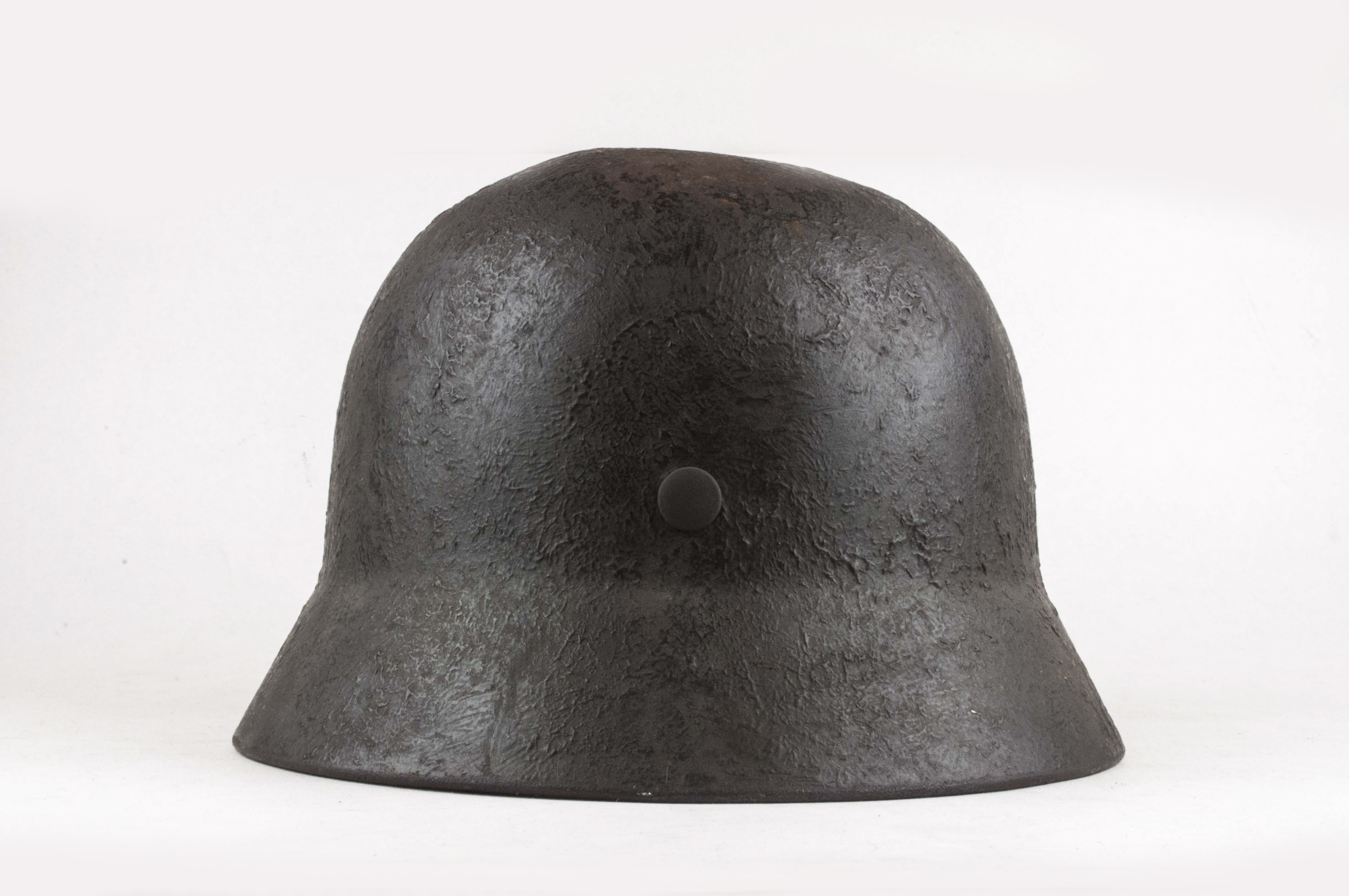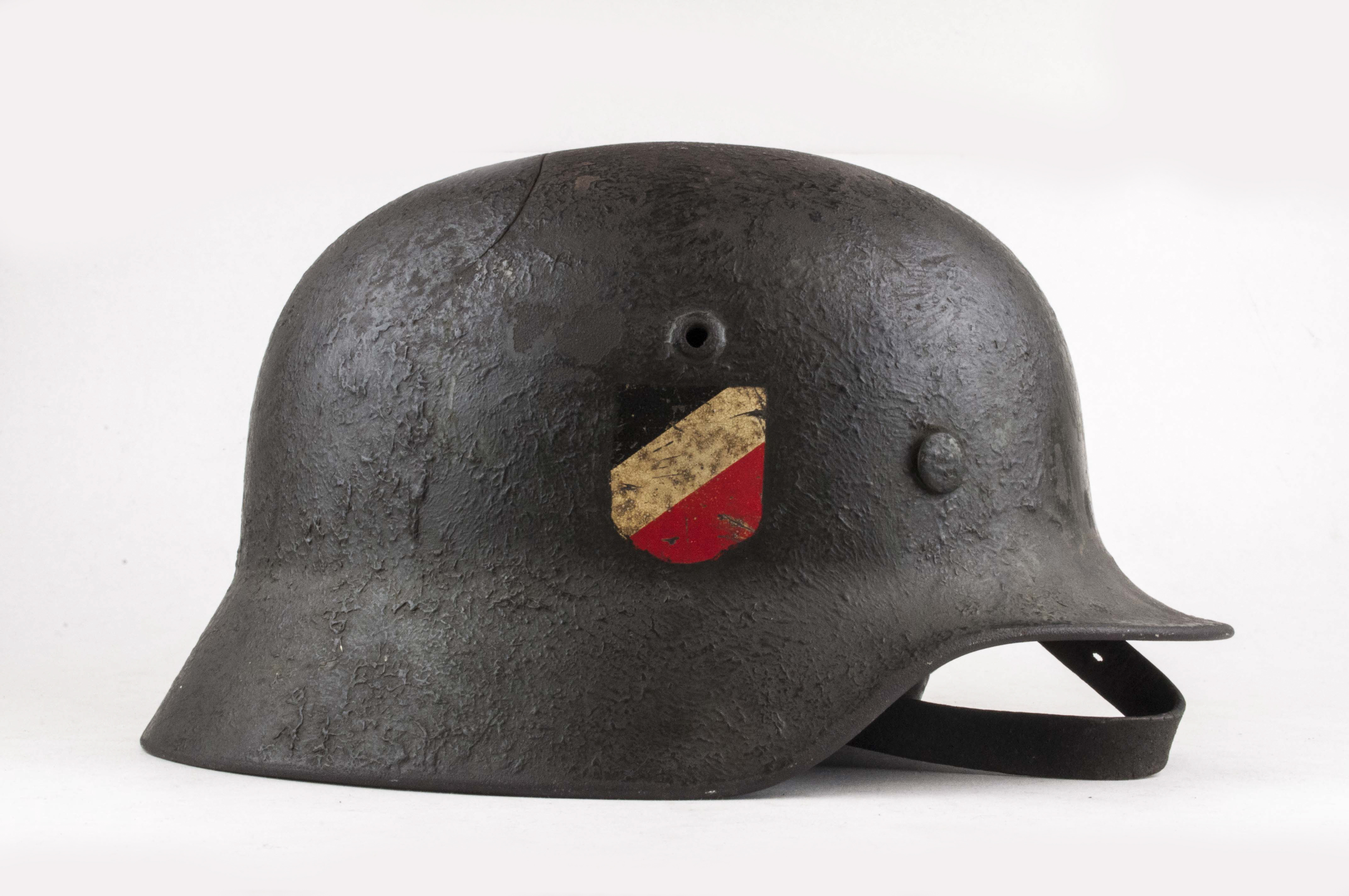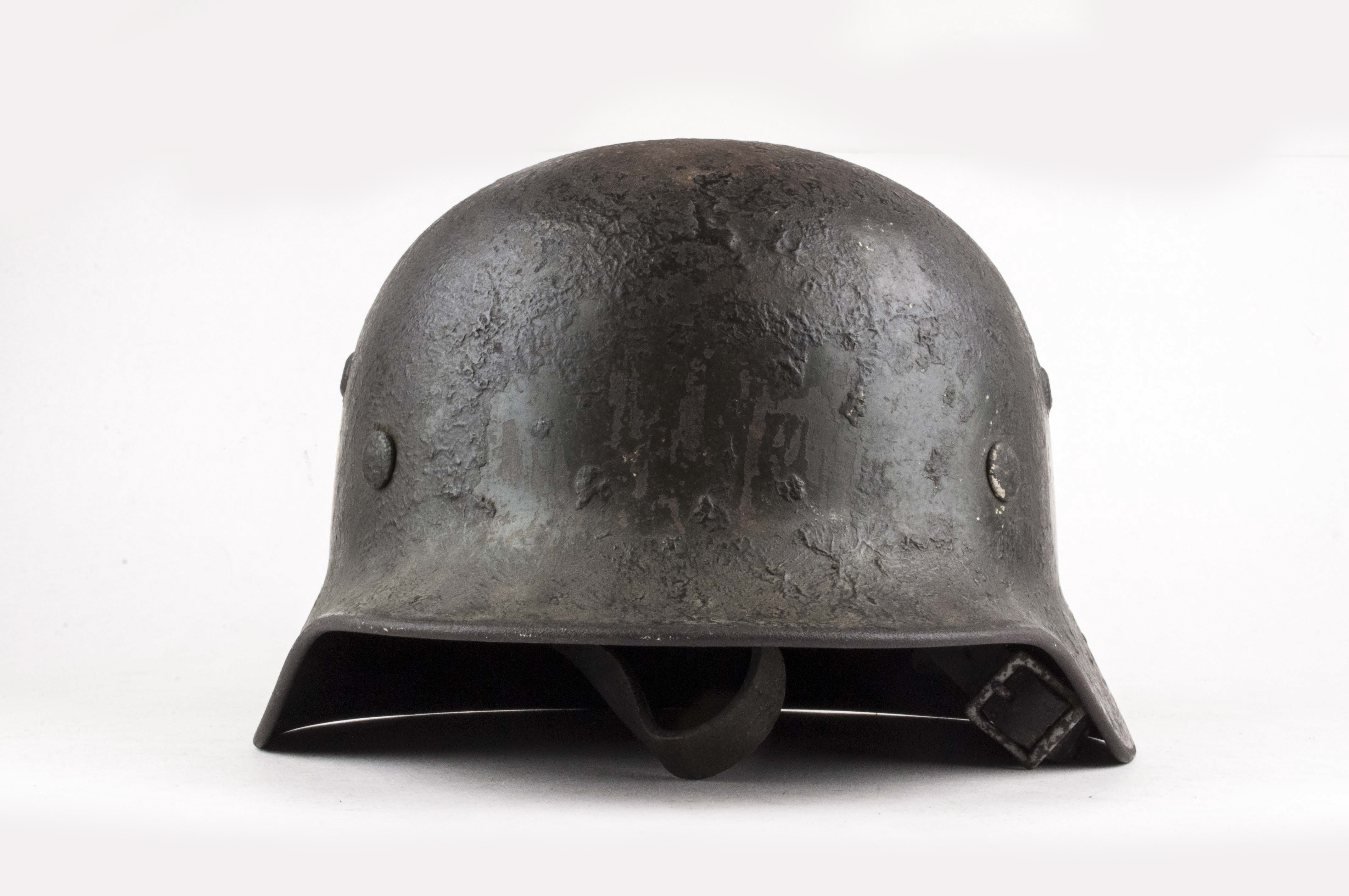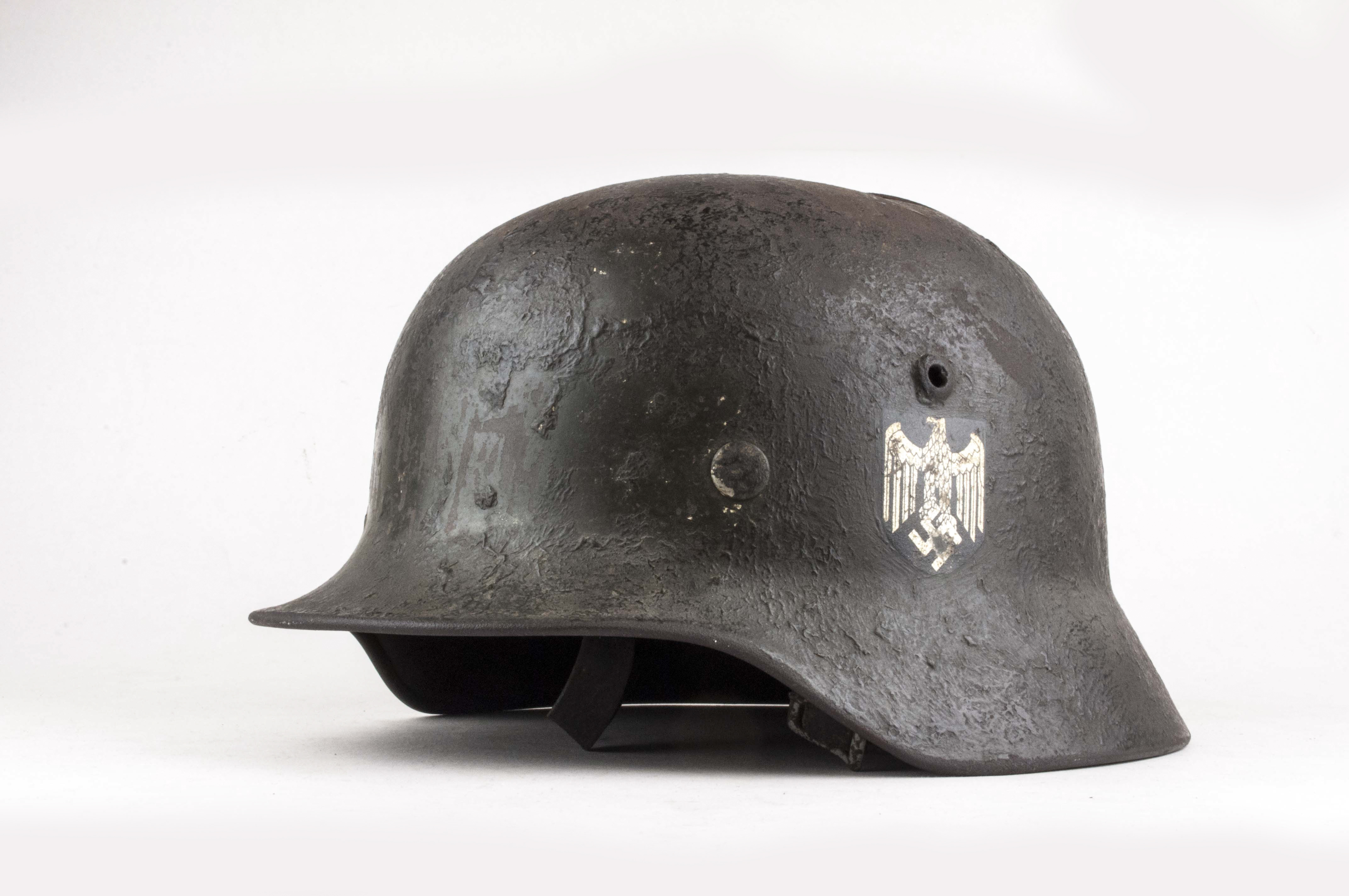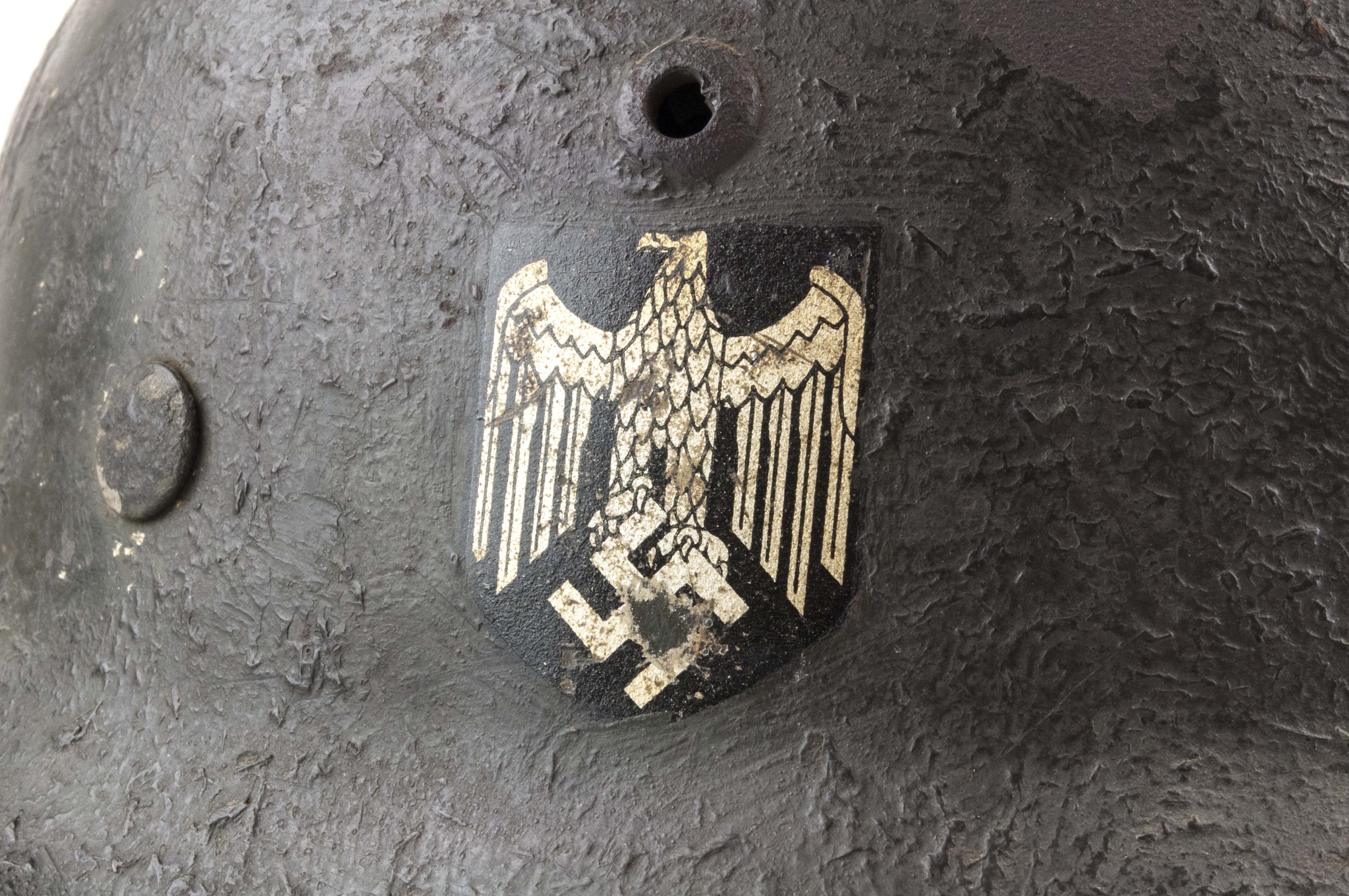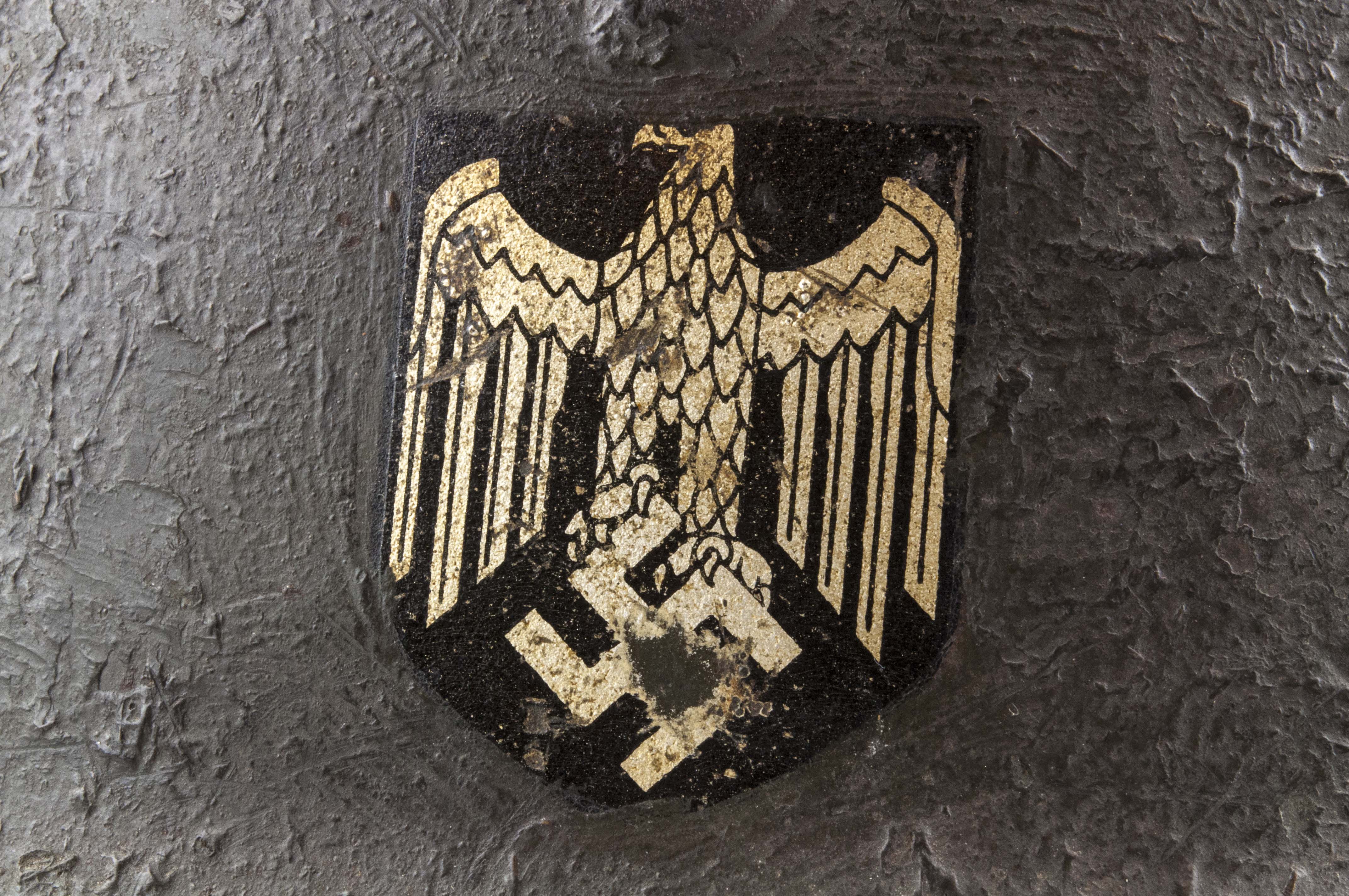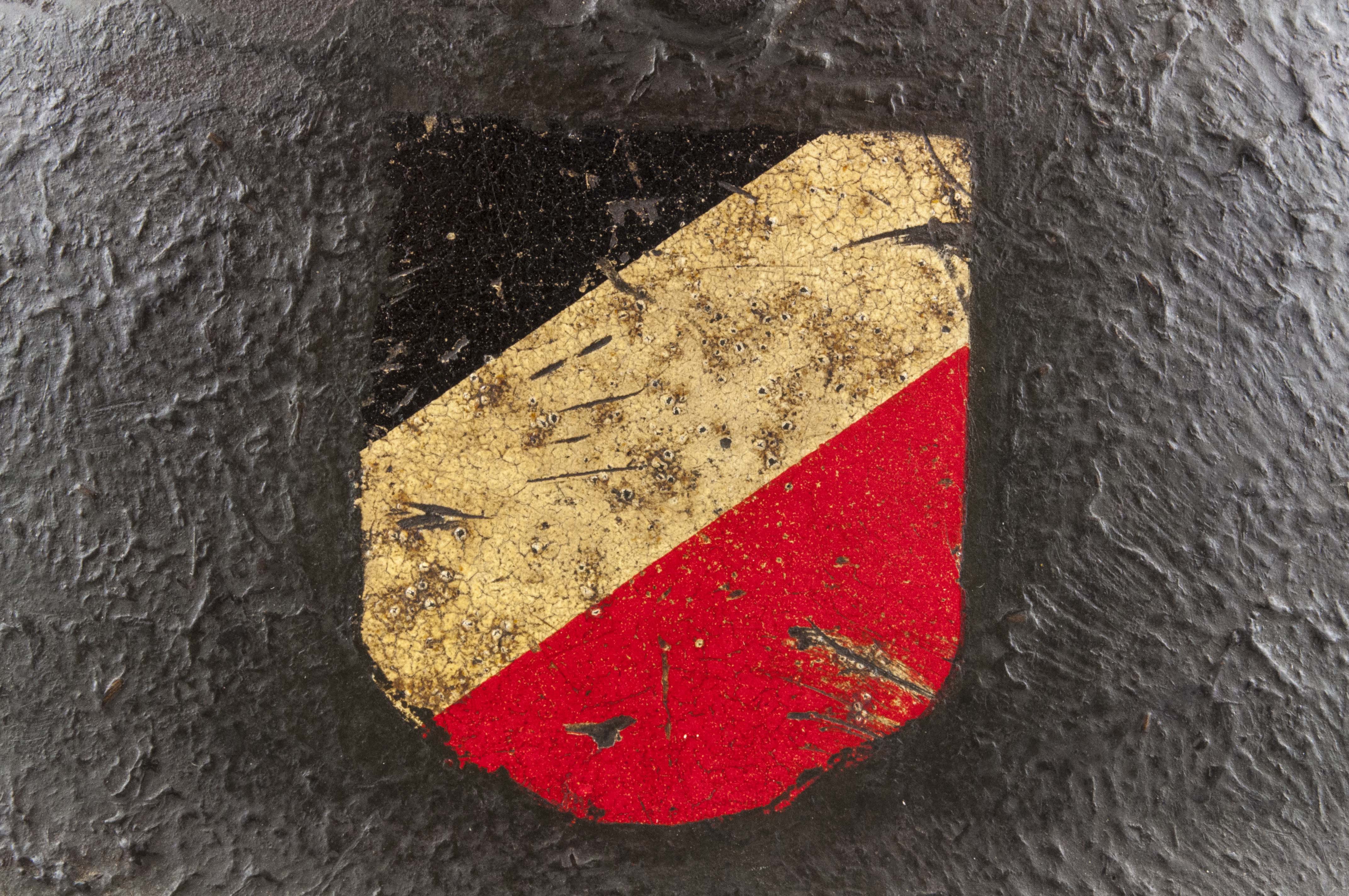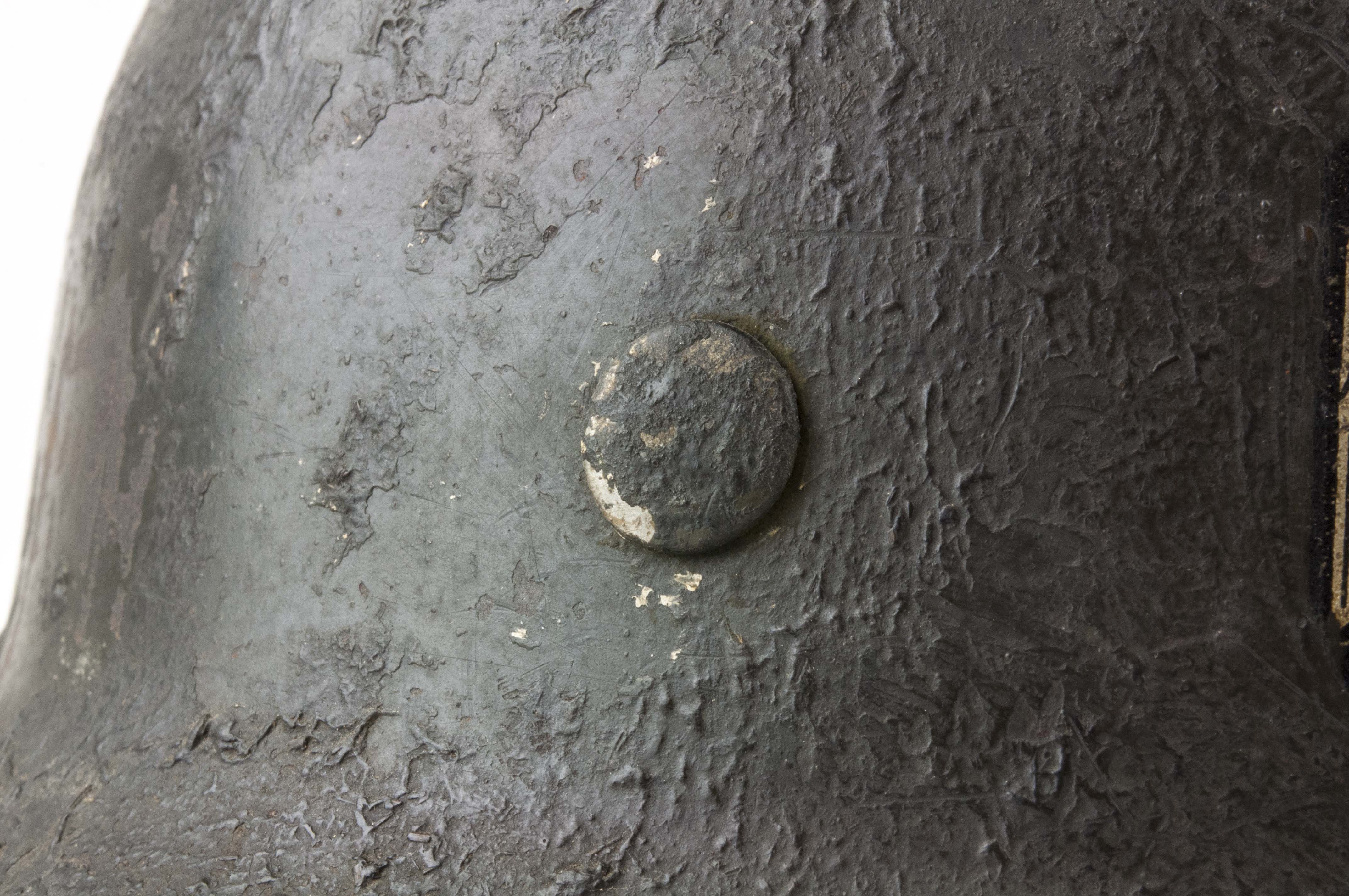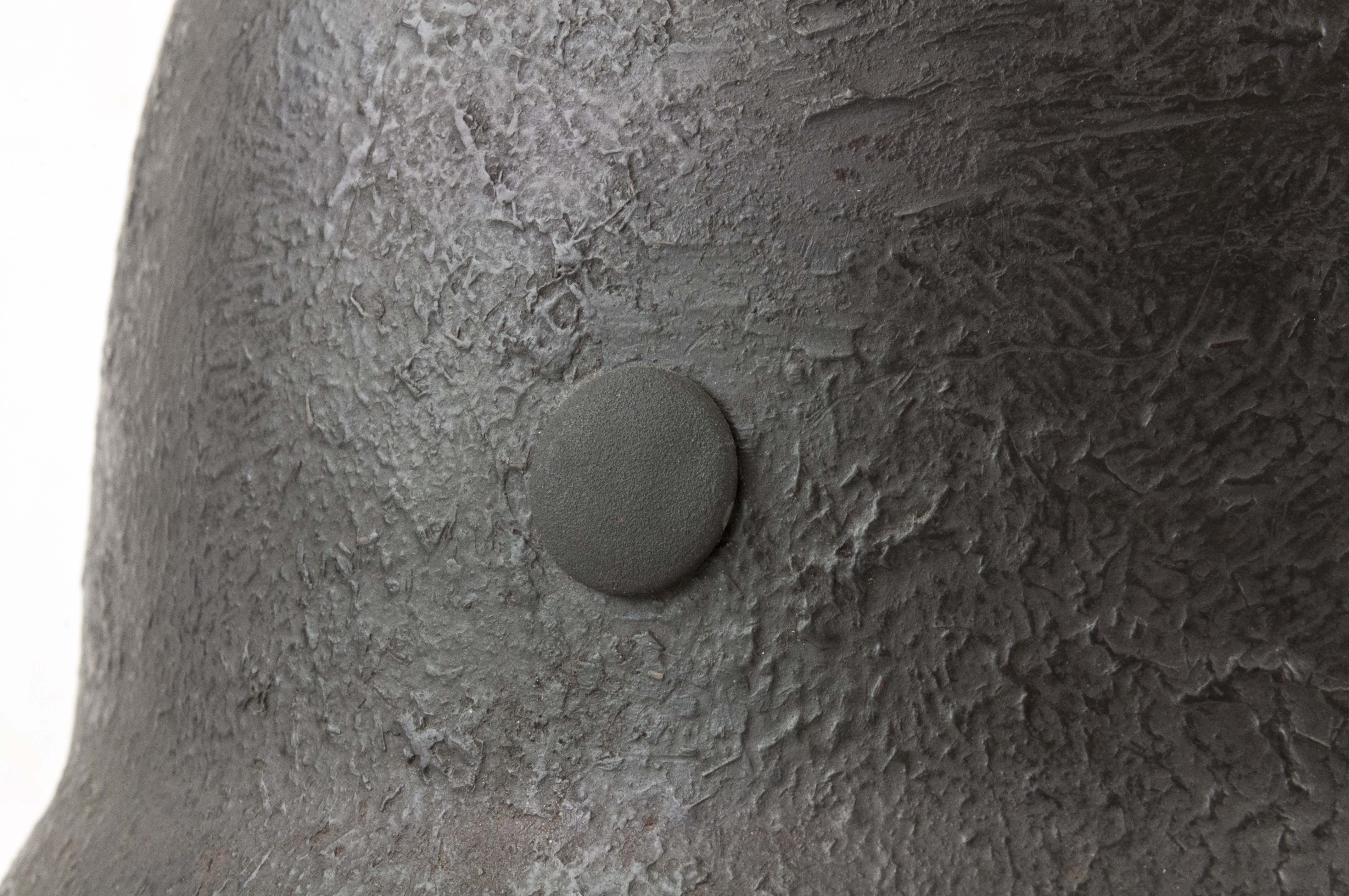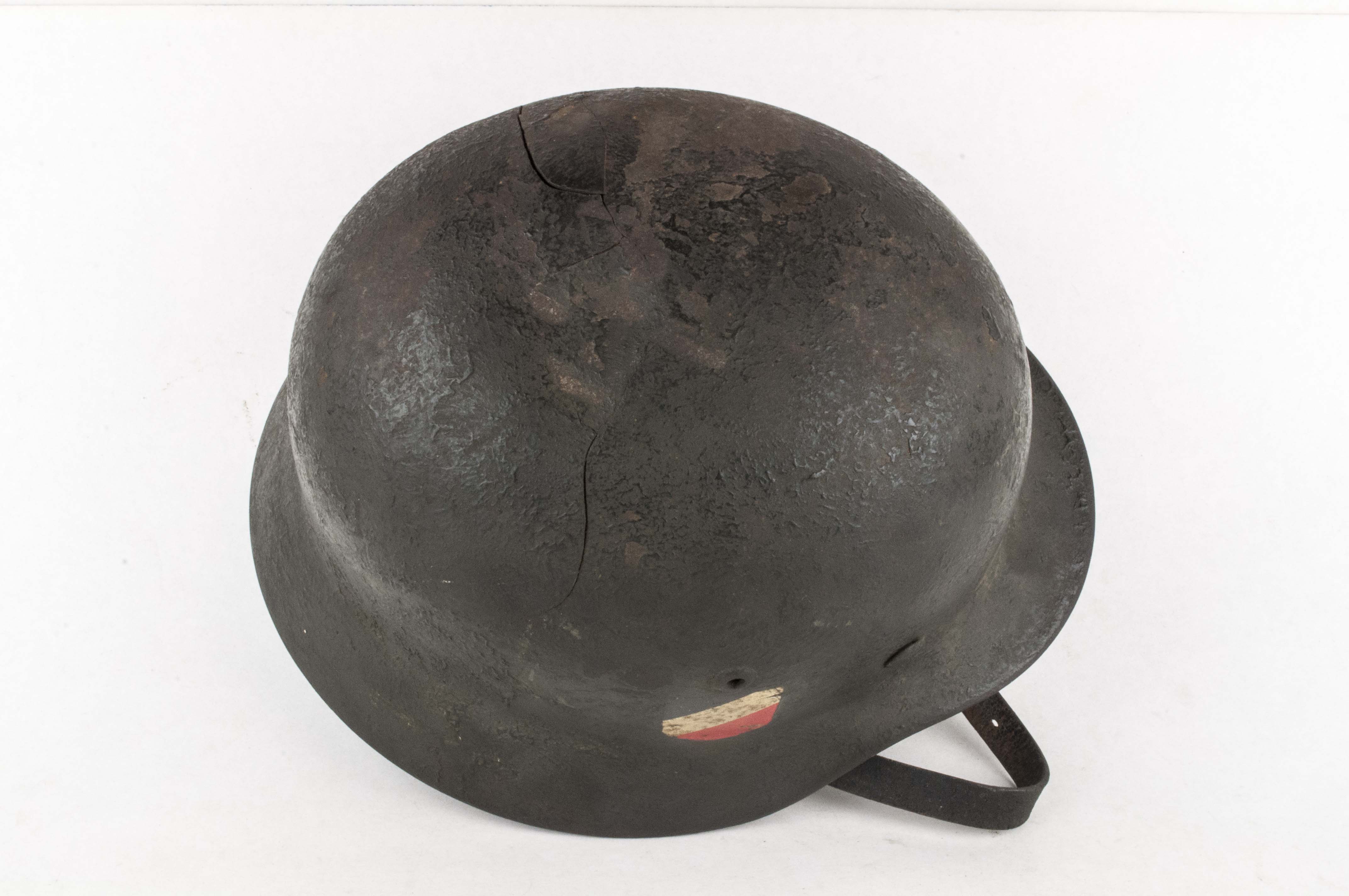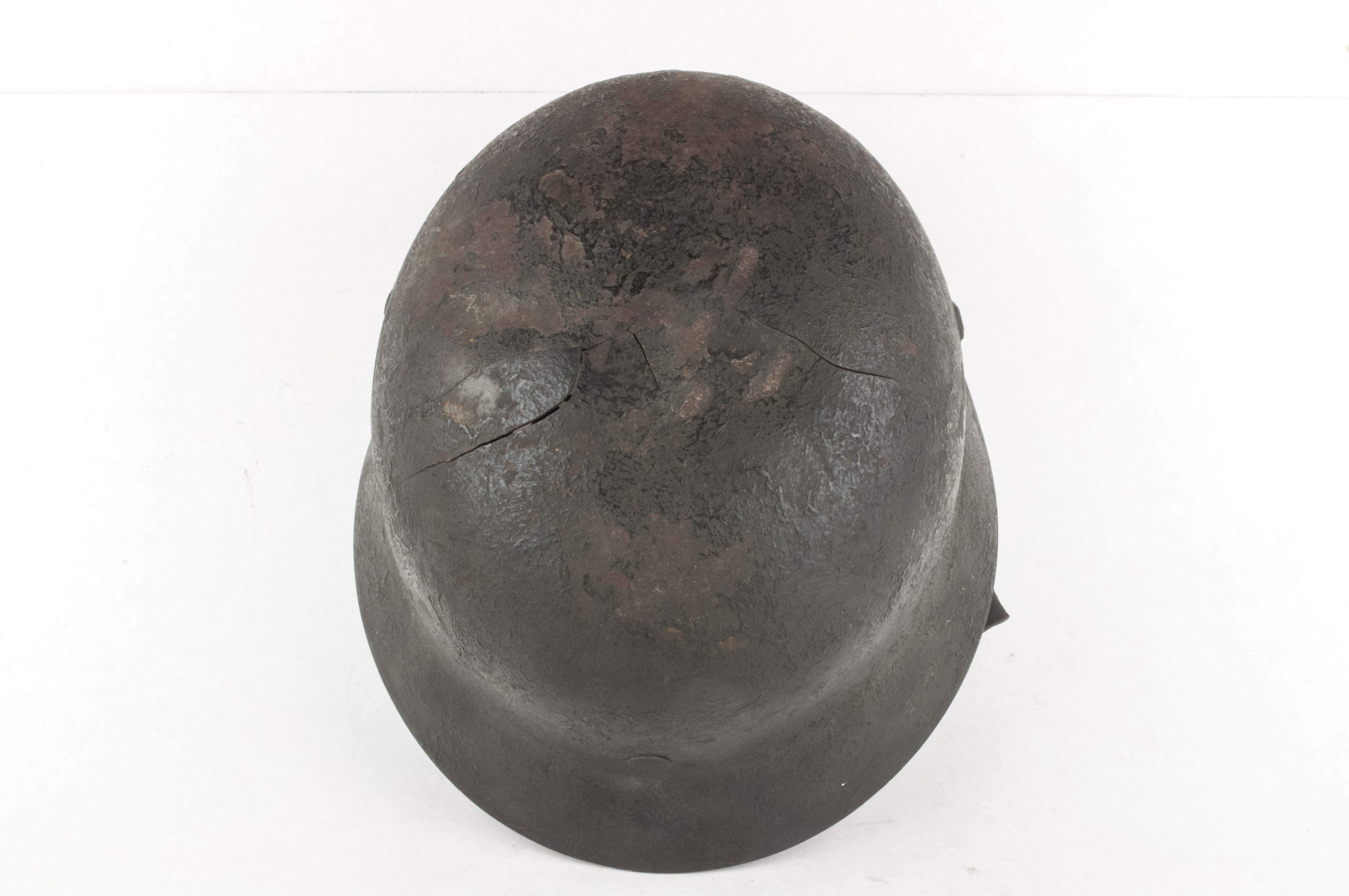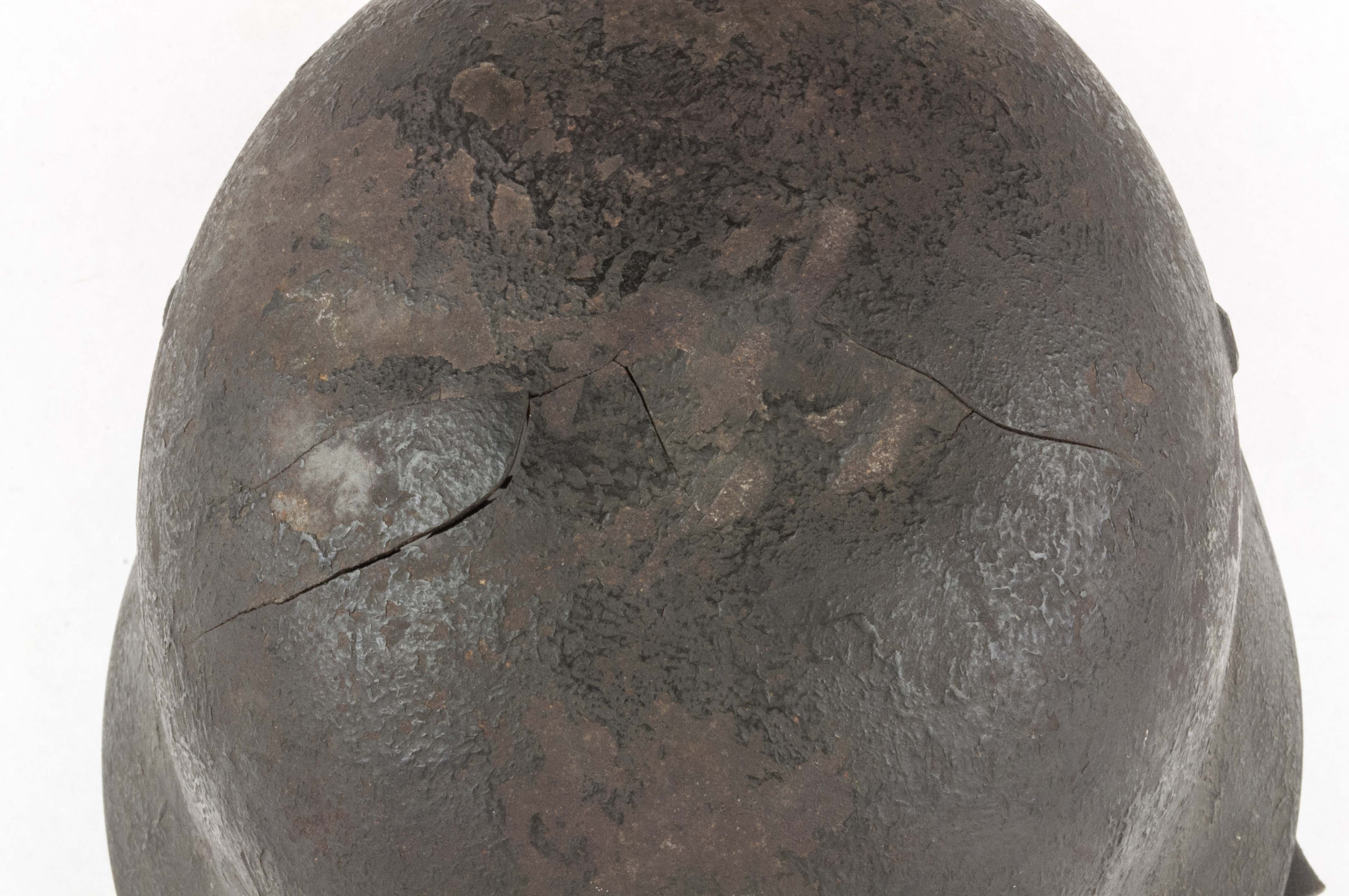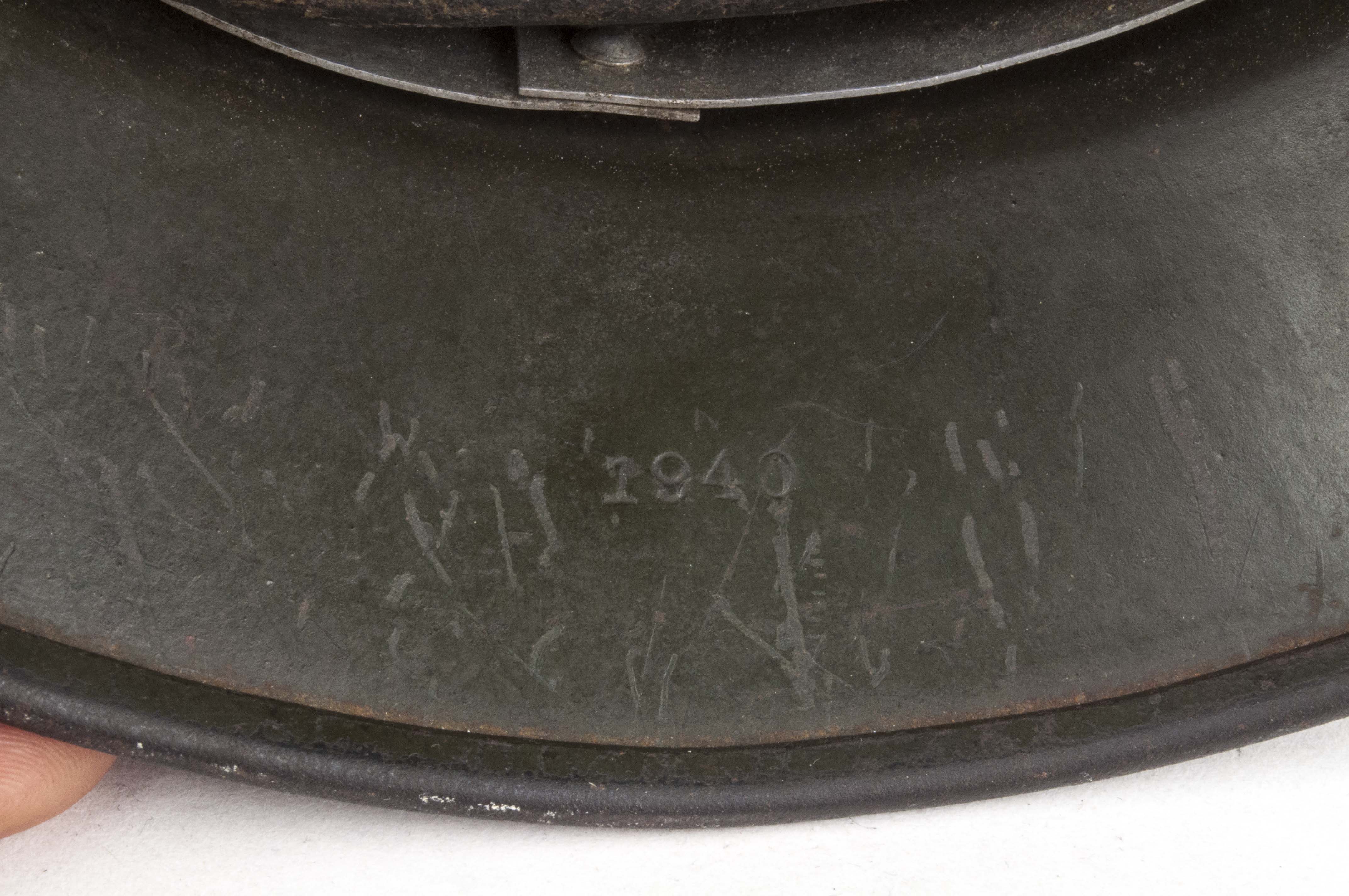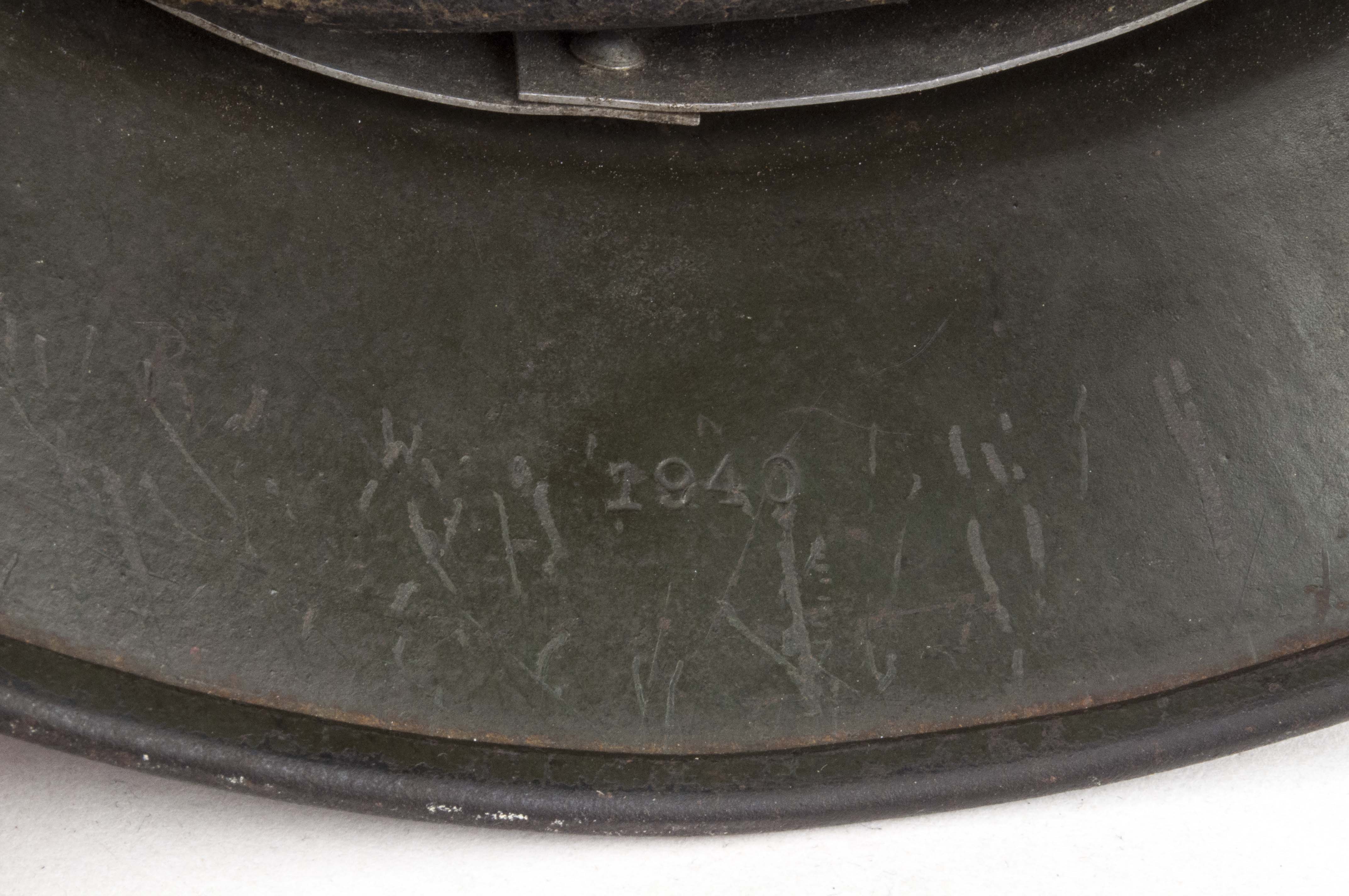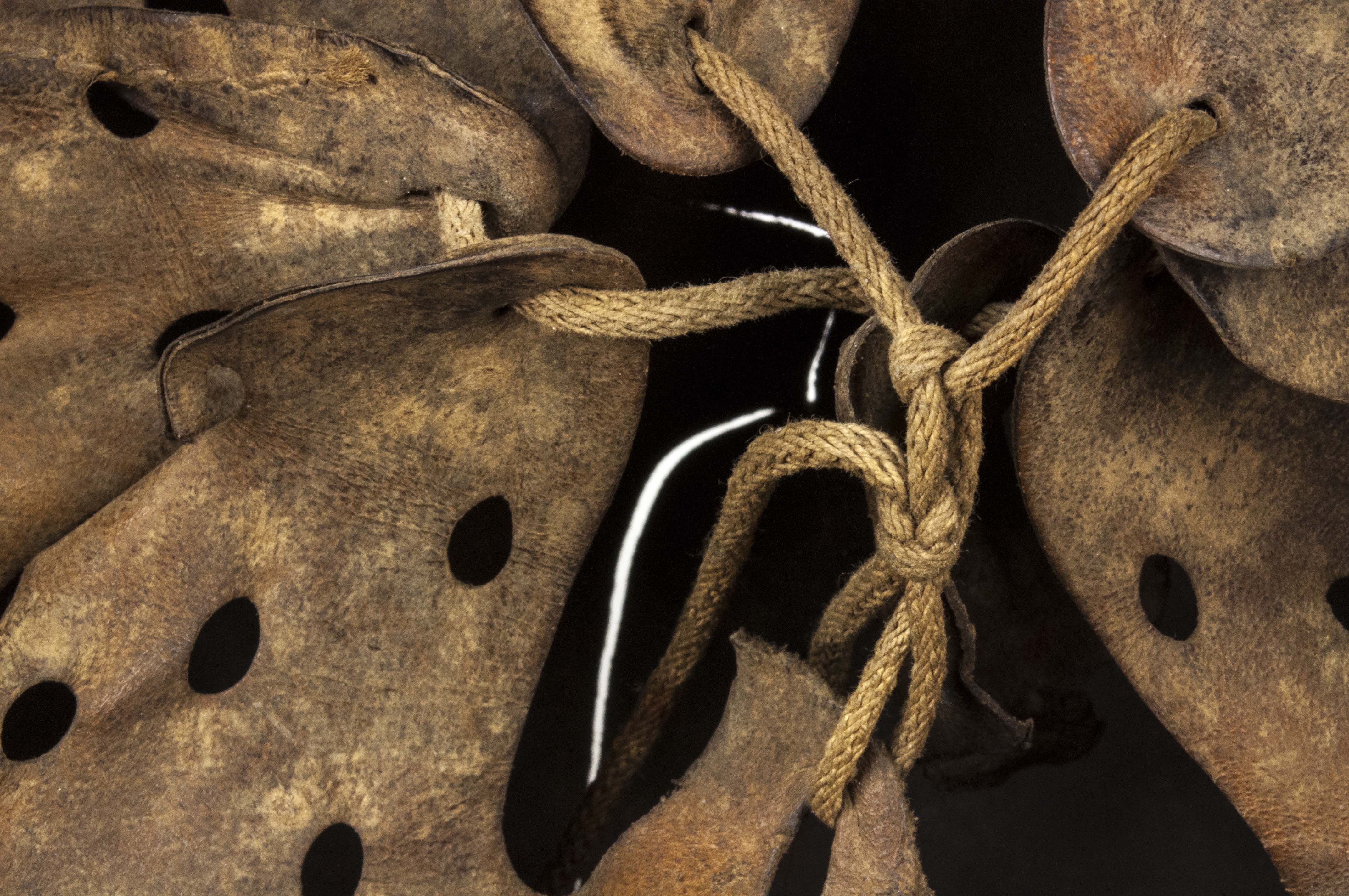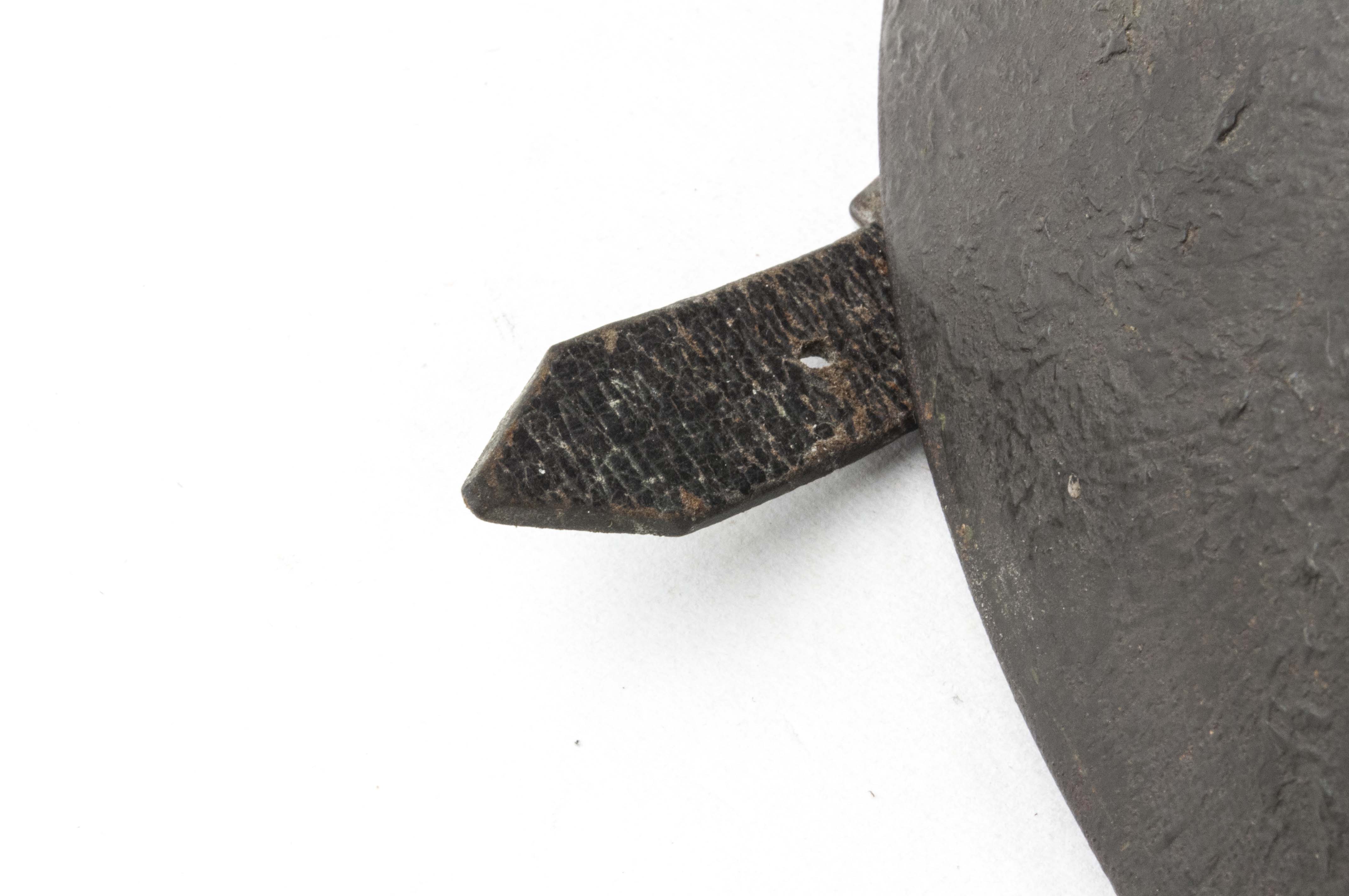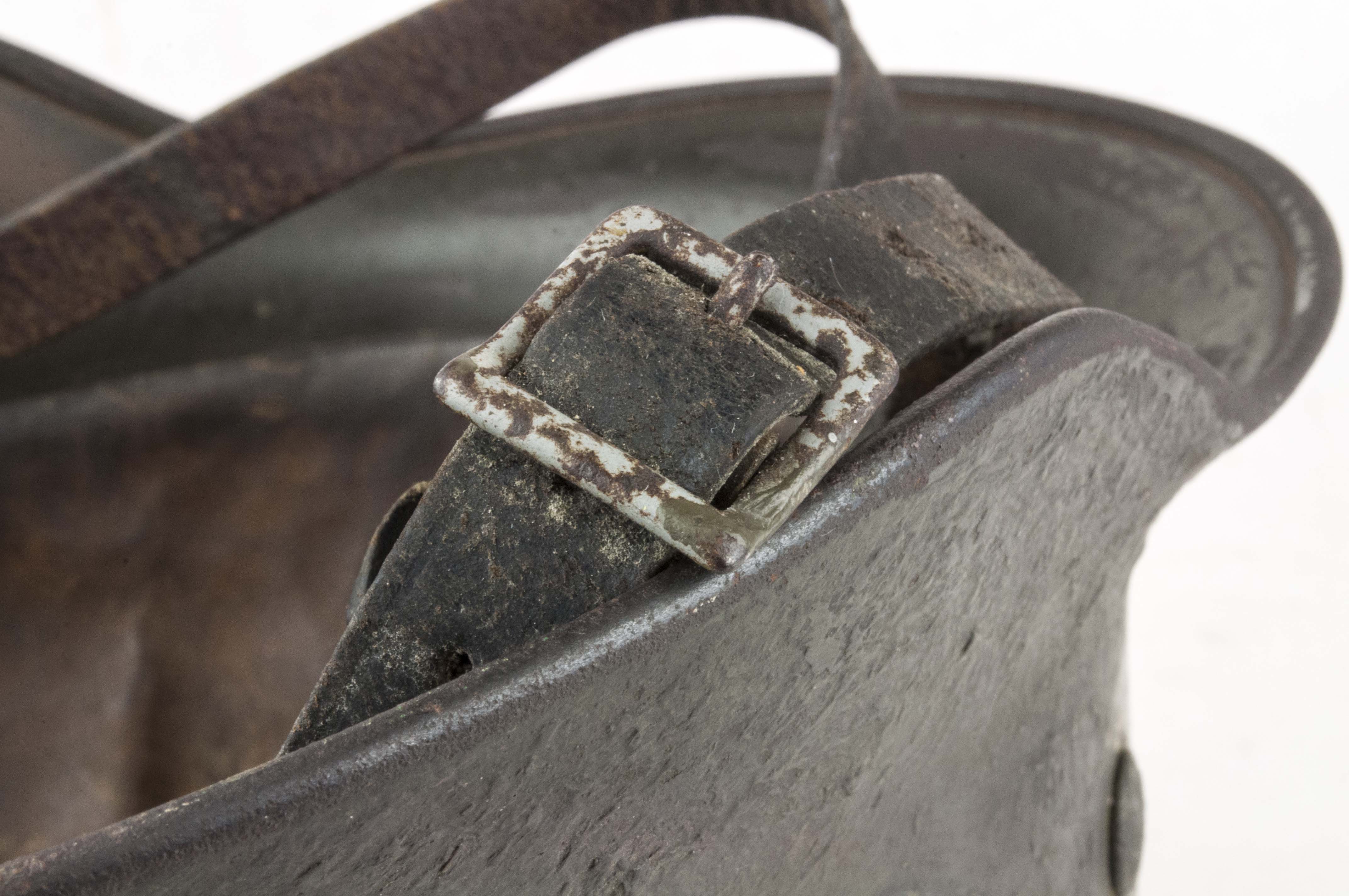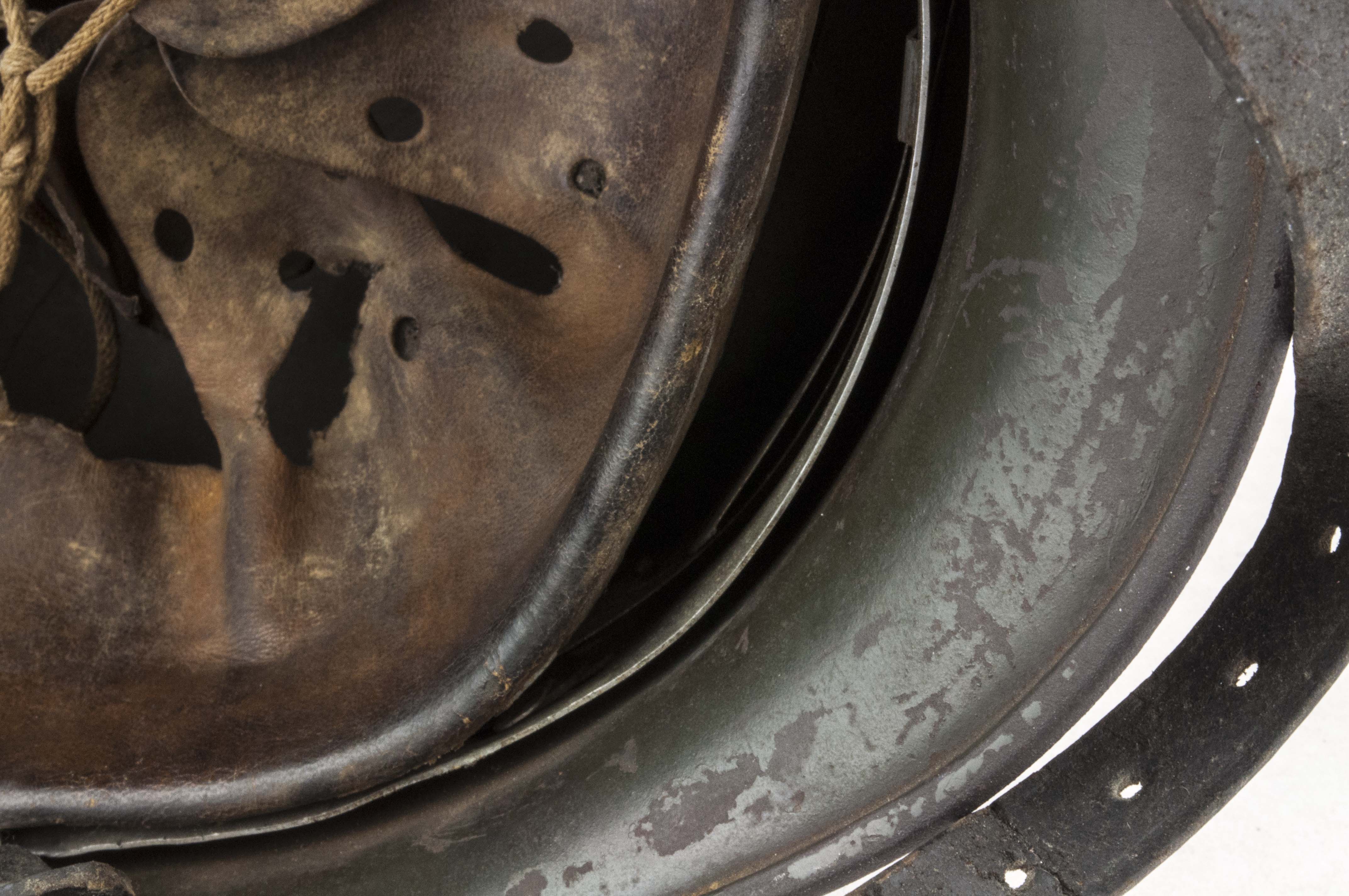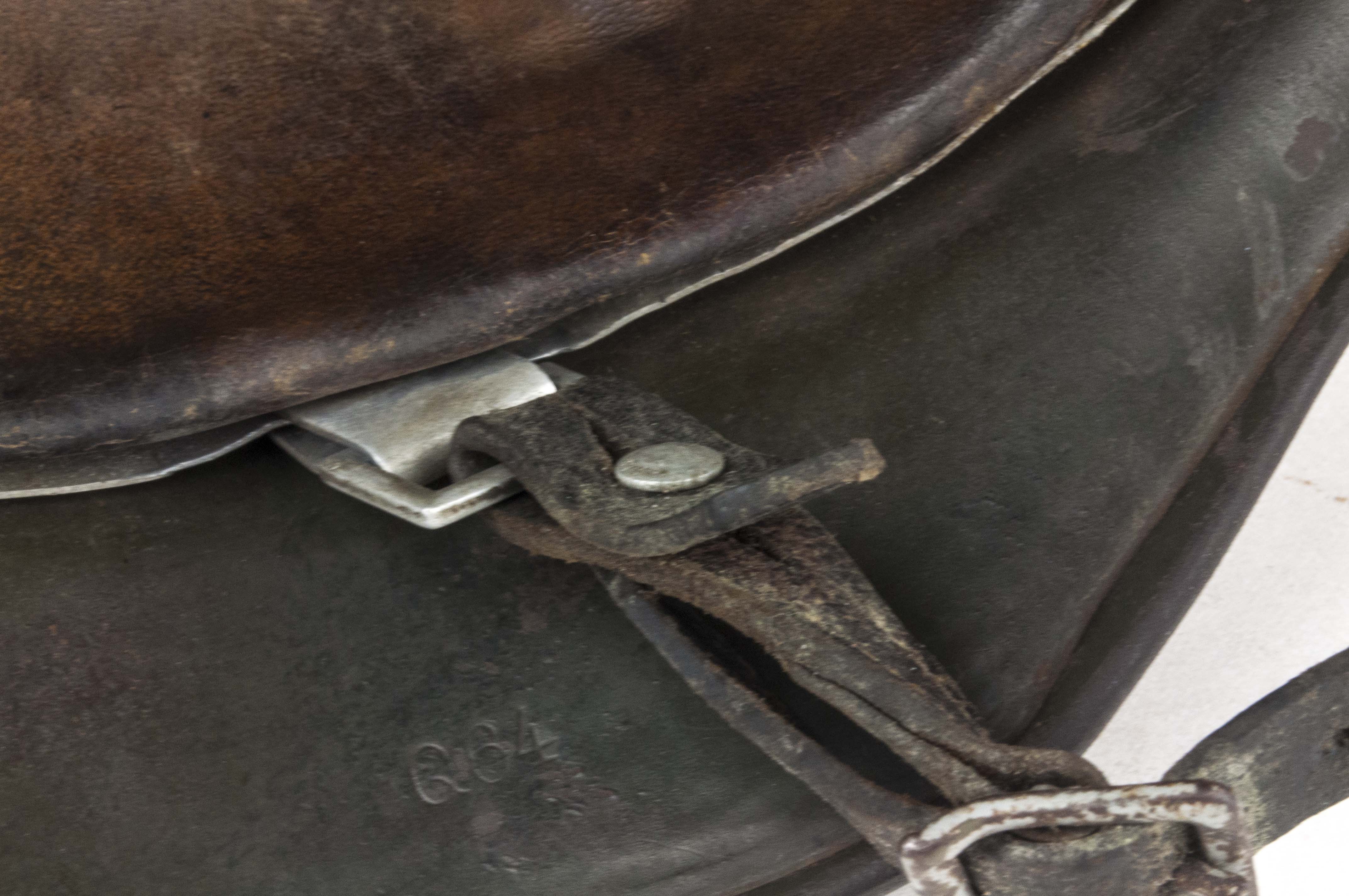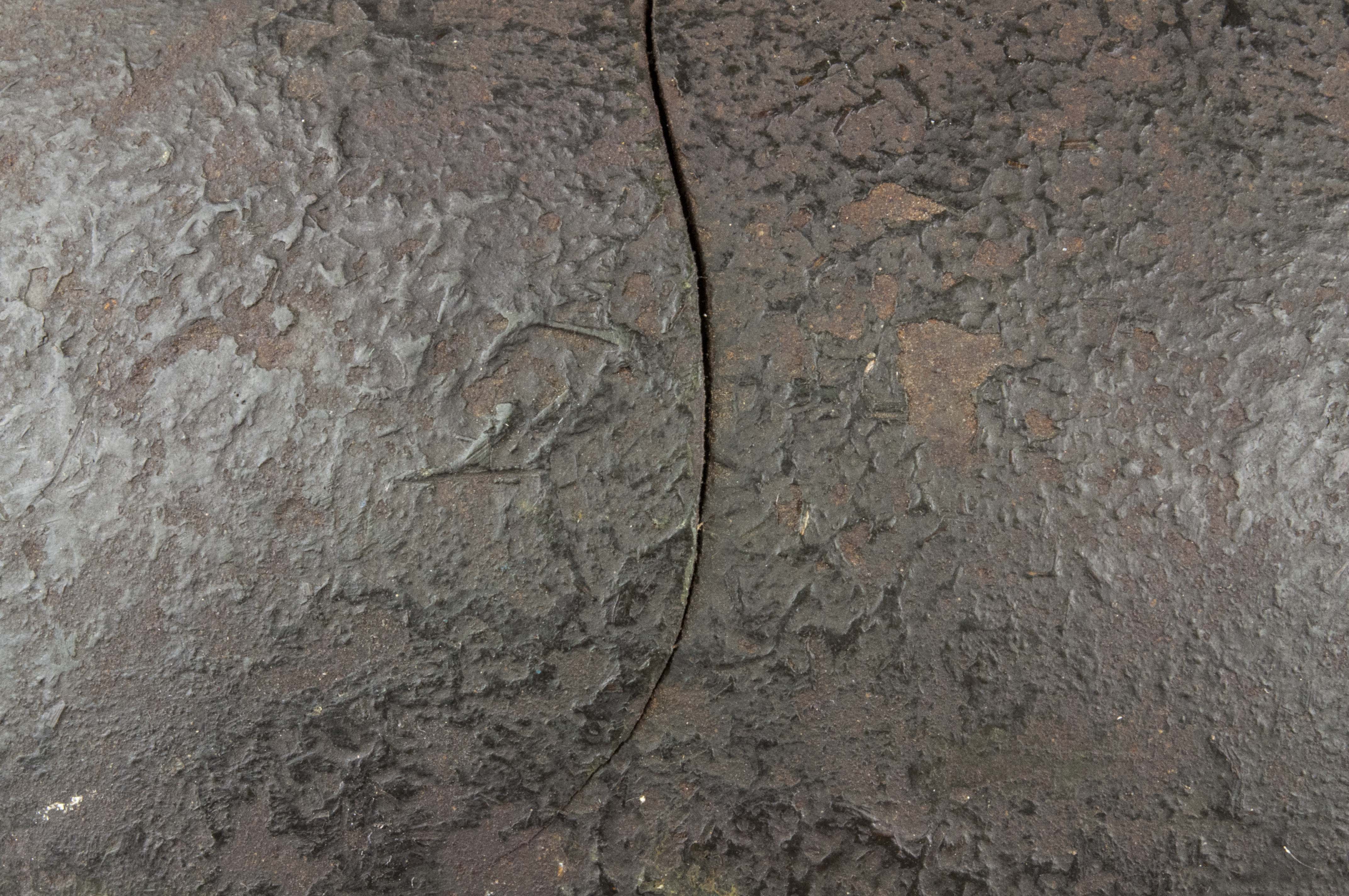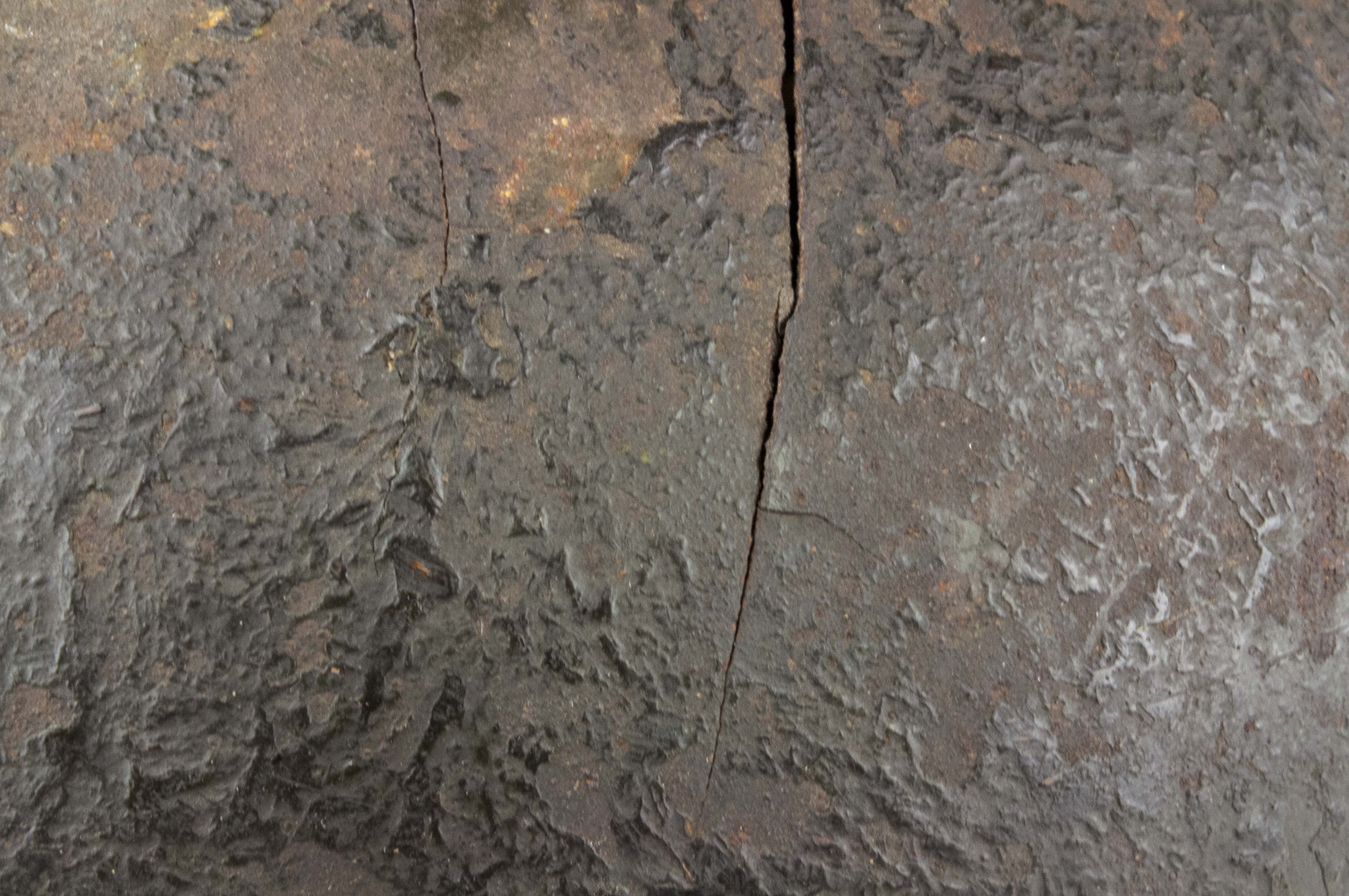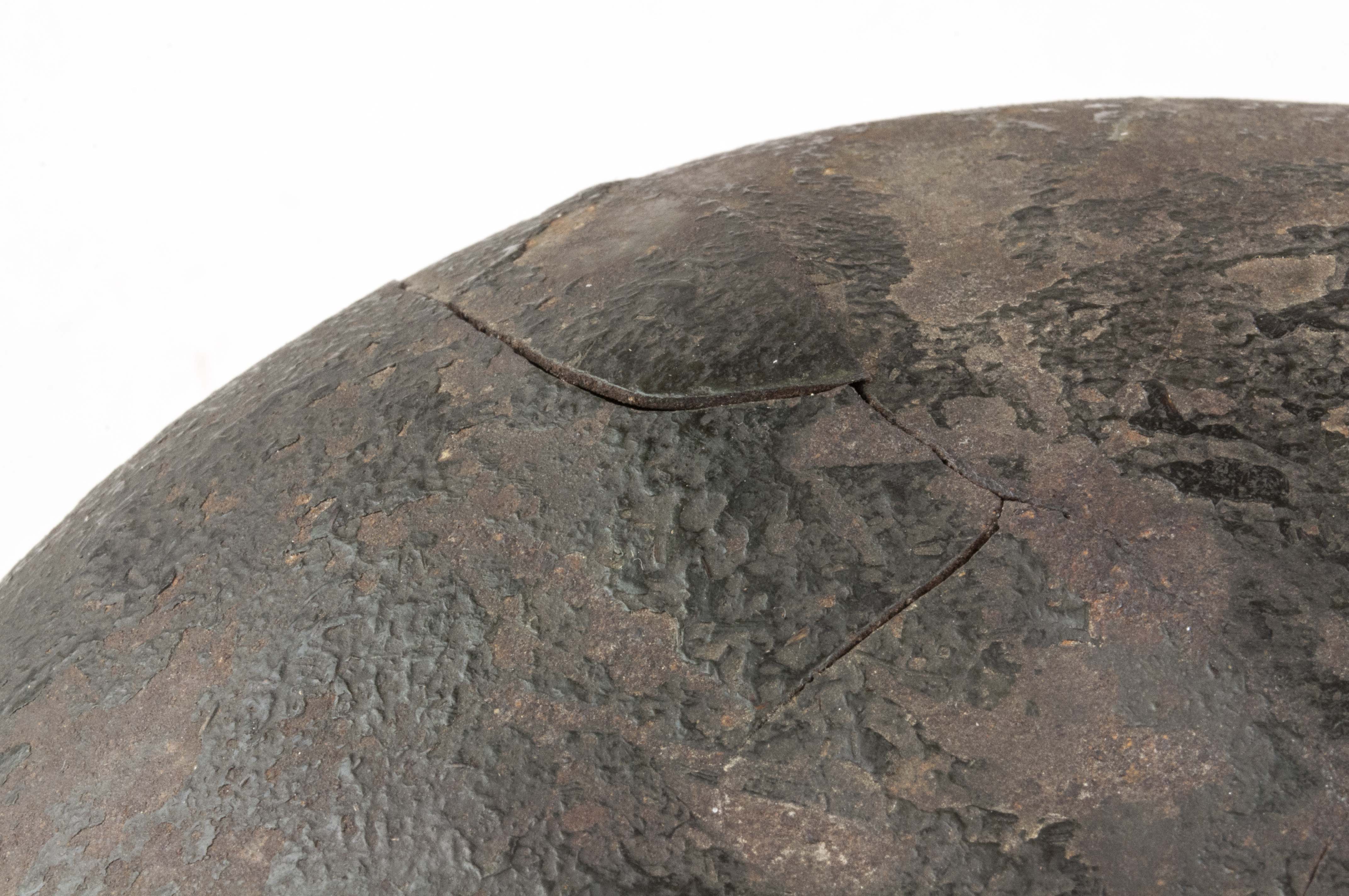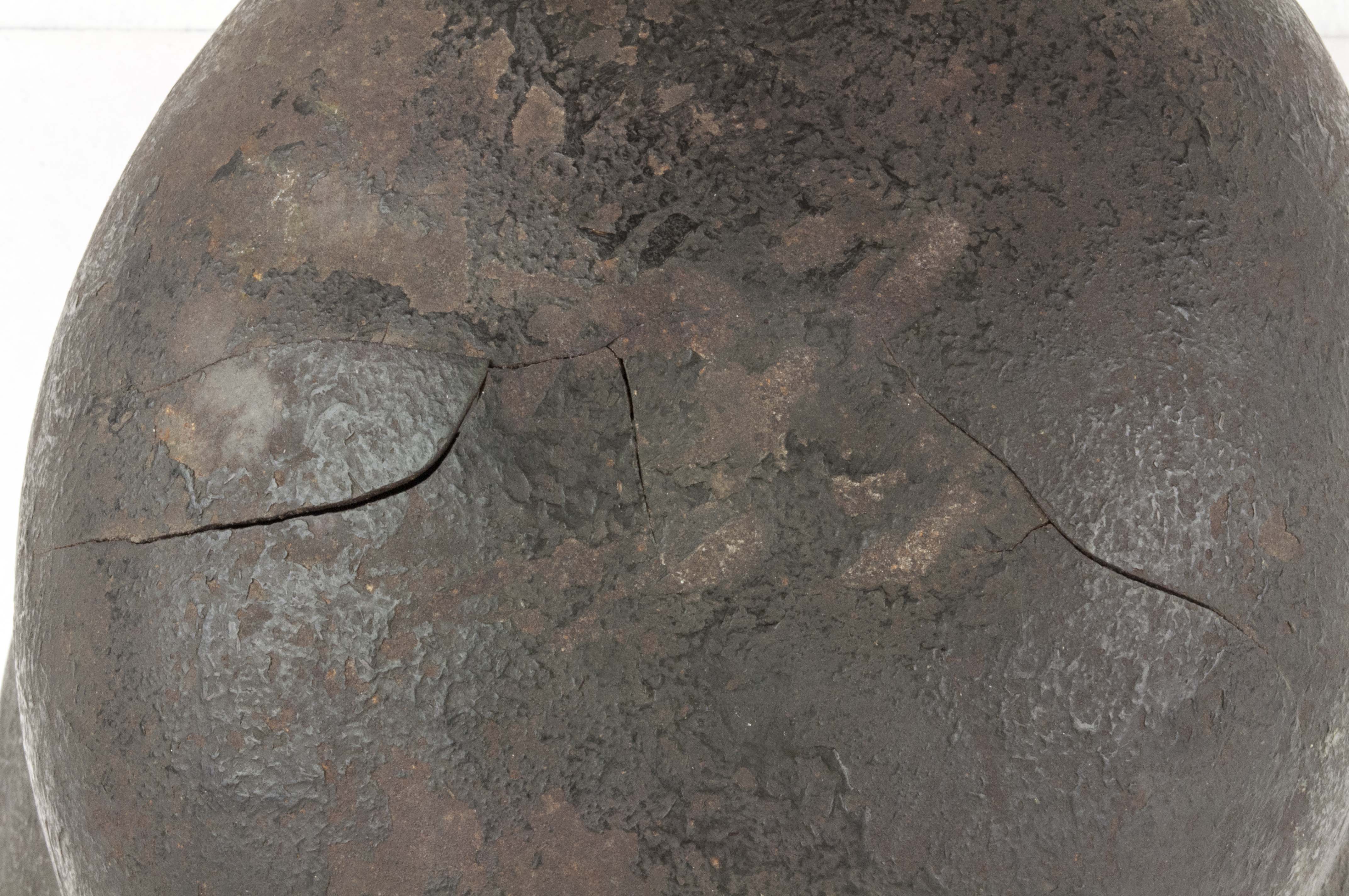Description
Arguably the helmet was the most recognizable part of the individual German soldiers appearance. With a design that derived from the type used in world war one, the German helmet offered more protection then ones used by it’s enemies. The quality field gray painted steel helmet with two decals and rolled steel rim and leather liner was a labor intensive product and simplified as the war progressed. The earliest model helmet used in world war two was the model 35 or M35 Stahlhelm. During the war the helmet was simplified in 2 stages. In 1940 the airvents changed from separate rivets affixed to the helmet shell to stamped in the main body of the shell. In 1942 a new model was introduced where the rim of the shell was left sharp and not rolled over as previous models. These models are known in the collector community as M40 and M42. The low sides that protect the neck and ears, the tell tale design that the Germans introduced in 1935 can still be seen in modern day army helmets.
Model: M35
Decal: One Heer decal and one national (Tricolor) decal
Paint: Factory applied smooth apple green overpainted with a rough camouflage paint referred to as Rautarn.
Markings: Q64 and 1940, both in the rear.
Maker: Quist, Esslingen.
Size: Shellsize 64, headsize 56 cm
Batch number: 1940
Year: 1938
Notes: This helmet was produced in 1938 as the date in the Liner suggests. The helmet was worn a lot and received a extra layer of thick camouflage paint often referred to as Rautarn. The helmet has a wartime battle damage on the top. Most likely a explosion was near the helmet which cracked the shell. A ‘killer’ lid.



